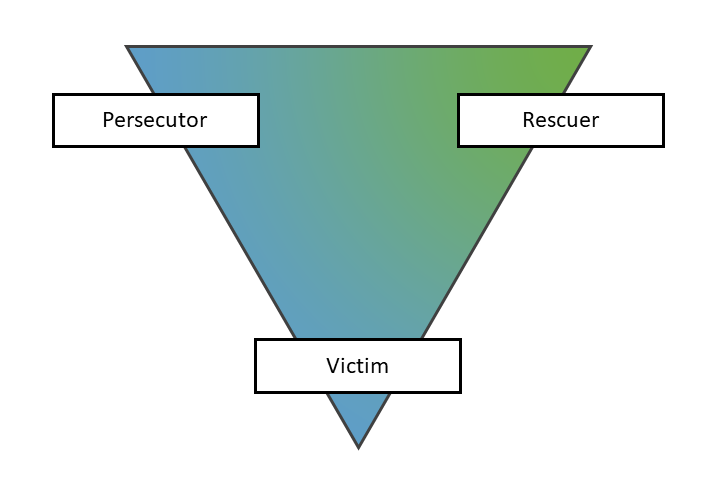What is the Karpman Triangle & Does it Help with Codependency
Many people struggle with codependency and don’t even realize it. Perhaps you feel like you’re stuck in a codependent relationship within your family or with several people in your friend group. You can’t help but feel like you keep falling into the same patterns repeatedly and dealing with the same problems. But you don’t know how to snap out of it or why it keeps happening.
The Karpman drama triangle is a map of human interactions that was developed by Stephen B. Karpman. The triangle illustrates the different roles that are involved in a codependent relationship. Here’s how the triangle breaks down codependency and how recognizing the patterns it presents can help you release yourself from these patterns.
The Roles
In the Karpman drama triangle, each participant in a conflict has their own unique role. The persecutor typically presents as controlling, critical, and authoritarian. The persecutor may actually attack the victim—or they might only perceive themselves as a victim. Either way, the victim feels helpless, and they don’t feel confident making their own decisions.
The rescuer has a savior complex and feels like they must step in to help the victim. They feel guilty if they do not support the victim, but their constant “rescuing” really serves to enable the victim. Furthermore, their focus on rescuing the victim allows them to avoid dealing with their own problems.
How it Starts
Where do people learn these roles? And how do they get stuck in these patterns? Typically, people start falling into these patterns within a family system. They might see these patterns exemplified in older generations and model the same behaviors themselves. People who have picked up these relational models in their families might bring the same attitudes to their relationships with friends or even attract people who represent other roles within the triangle. Simply put, these roles are learned—but people can also switch into new roles, which only worsens the conflicts.
Lack of Selfhood
Why do people become codependent? Codependency represents a loss of selfhood. It means putting your happiness into the hands of others. In some ways, it is a method of escape. By focusing on issues related to other people, you can avoid your own problems. When you’re codependent, you can completely lose touch with your personal beliefs and emotions. It can cause a persistent sense of martyrdom. Sacrificing parts of yourself can offer a sense of purpose, but this means your relationship has an unhealthy foundation.
Psychological Motivation
Even when someone is clearly being harmed by their role in a codependent triangle, they still receive a sort of psychological payback for participating. It might sound convoluted on the surface, but in some way, every participant gets some of their needs met through this dynamic. The rescuer gets to feel useful to the victim, and the victim feels like their needs are met. Both parties remain unaware of just how damaging this dynamic is.
Escaping the Triangle
How does one finally escape this triangle and break away from this toxic dynamic? It all depends on their role. The persecutor must learn how to recognize and respect others’ boundaries. The victim must reconsider how they see themselves and begin to understand the negative impacts of their own actions, as well as own their agency. The rescuer needs to see how they use this dynamic to escape their own problems.
—
Do you suspect that you’re struggling within a codependent “triangle”? Working with a therapist can help you break these patterns. Reach out to today to discuss your options for scheduling your first session for codependency therapy.

